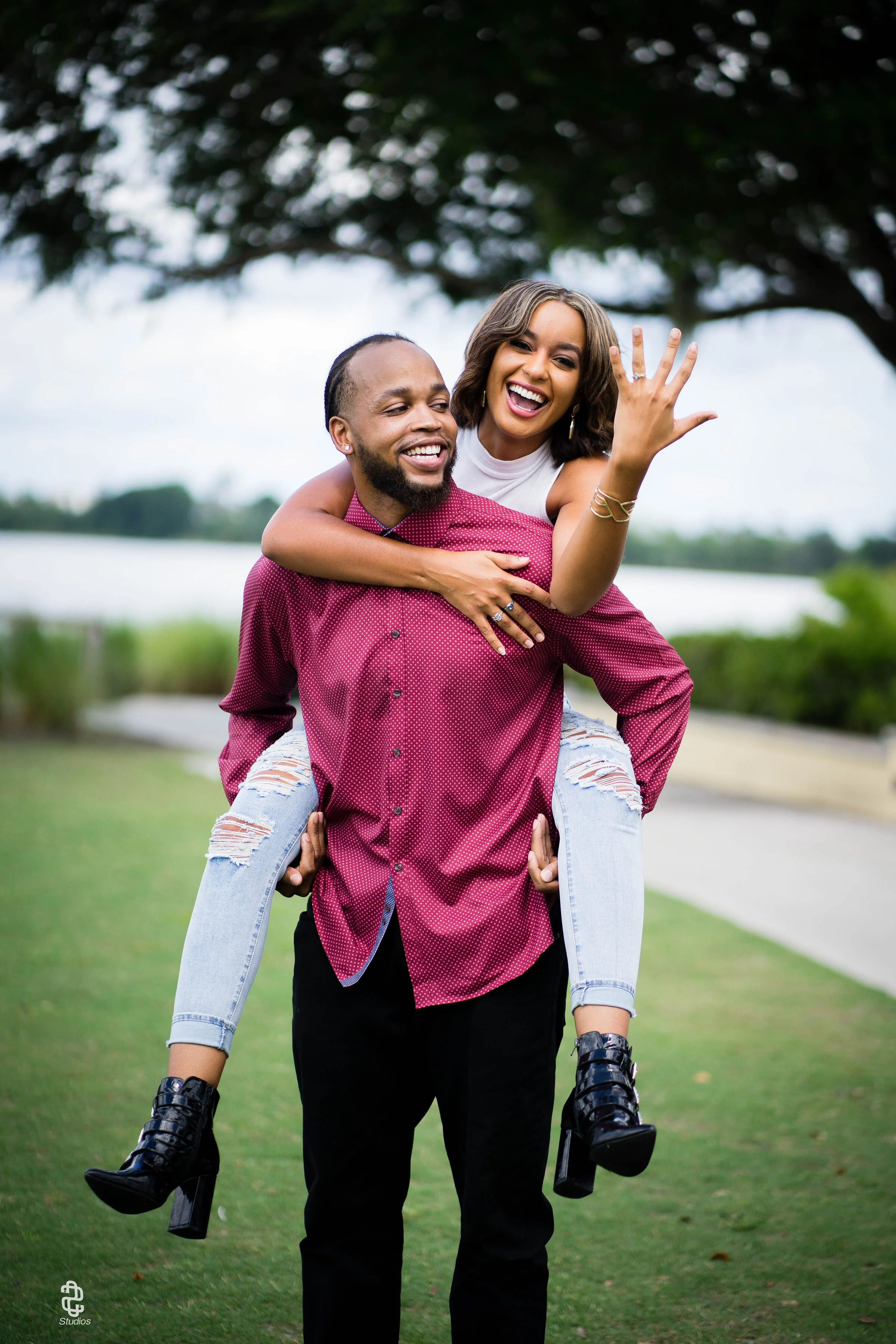So, you have find “the one” and are ready to pop the question. Now what?
Shopping for an engagement ring can be intimidating. Diamonds, rose gold, pear-shaped, halo-cut—where do you begin? To help you navigate the process and endless terminology, we created a simple, step-by-step guide to choosing the perfect ring for your partner.
do your research.
This step may seem a bit obvious, but it is crucial! Before you begin your hunt, you need to learn some basics and have a vision of what you want. You may want to look into local jewelers, pricing, diamond vs. diamond alternatives, ring sizing, and more. Pinterest is a great source for both knowledge and visual inspiration.
We recommend becoming familiar with the Four C’s:
Cut: The cut of a diamond refers to its angles and proportions. These factors contribute to how the diamond will sparkle and its overall aesthetic appeal. Examples of cuts include ideal, fine, shallow, and deep.
Color: The color of a diamond scales from completely colorless (a “perfect” diamond") to a light yellow tint. A colorless diamond will generally cost more than a colored diamond. In addition, lab-created diamonds can come in shades such as blue, pink, and black for a more unique look.
Clarity: A diamond’s clarity refers to its amount of internal impurities. The more clear your diamond, the more pricy and valuable it will be.
Carat: A carat is the weight of a diamond. As the carat size increases, so does the price.
2. Set a budget.
Before you head to your local jeweler, jewelry chain, or online ring shop, it is important to have a price range in mind. The total cost of your engagement ring depends on various factors: size, color, cut, shape, weight, etc. You may want to consult your partner about which factors are the most important and which take less priority. We also recommend inserting your income, savings, and other expenses into an engagement ring calculator to estimate a price that you can afford.
In additon, you may want to consider ring insurance. If you have homeowners’ or renters’ insurance, you have the option to purchase an extension that specifically covers your ring. If you do not have homeowners’ or renter’s insurance, there are independent jewelry insurance companies that you can work with. Insuring your ring will require an appraisal and cost, but is totally worth it!
3. choose a stone.
Did you know that there are many alternatives to diamond? A diamond stone is a traditional option, but not the only one! For example, moissanite is a popular substitute for diamond—it is very similar in appearance, but generally less expensive.
Or, you may feel that a colored stone would be more fitting for your partner. If so, you might consider:
Sapphire
Morganite
Emerald
Garnet
Ruby
Amethyst
When choosing a stone, it is important to ask yourself: does this represent my partner?
4. choose a shape.
Choosing a shape for your engagement ring may be a bit overwhelming. Factors such as finger size, personal taste, personality, and daily lifestyle should be considered when picking a ring shape. Here are some of the basics:
Round: Traditional, classic, circular shape.
Emerald: A modern rectangular shape with rounded edges.
Oval: Unique alternative to round shape.
Princess: A modern square shape.
Pear-Shaped: Unique, elegant droplet shape.
Marquise: Thin oval shape with pointed tips.
5. choose your metal and setting.
Once you have chosen your stone, it is time to bring it all together with your metal and setting. When choosing a metal, you may want to consider skin tone, durability vs. aesthetic, and personal style. If you partner has warm-toned skin, try gold, yellow gold, or rose gold. If they are drawn to cooler hues, try silver, white gold, or platinum.
Your ring setting is the prongs in which your stone is mounted. Types of settings include:
Shared Prong: Prongs are wrapped around crown of stone, minimizes sight of metal.
Channel: Vertical metal walls on each side of stone.
Pave: Small beads set around stone.
Bezel: Metal rim around stone.
Congratulations, you are one step closer to your happily ever after. Remember, you do not have to follow trends when choosing your engagement ring—it is all about representing you and your partner’s styles, personalities, and love for one another. Cheers to your love story!
If you are interested in our engagement photoshoots, learn more here.







